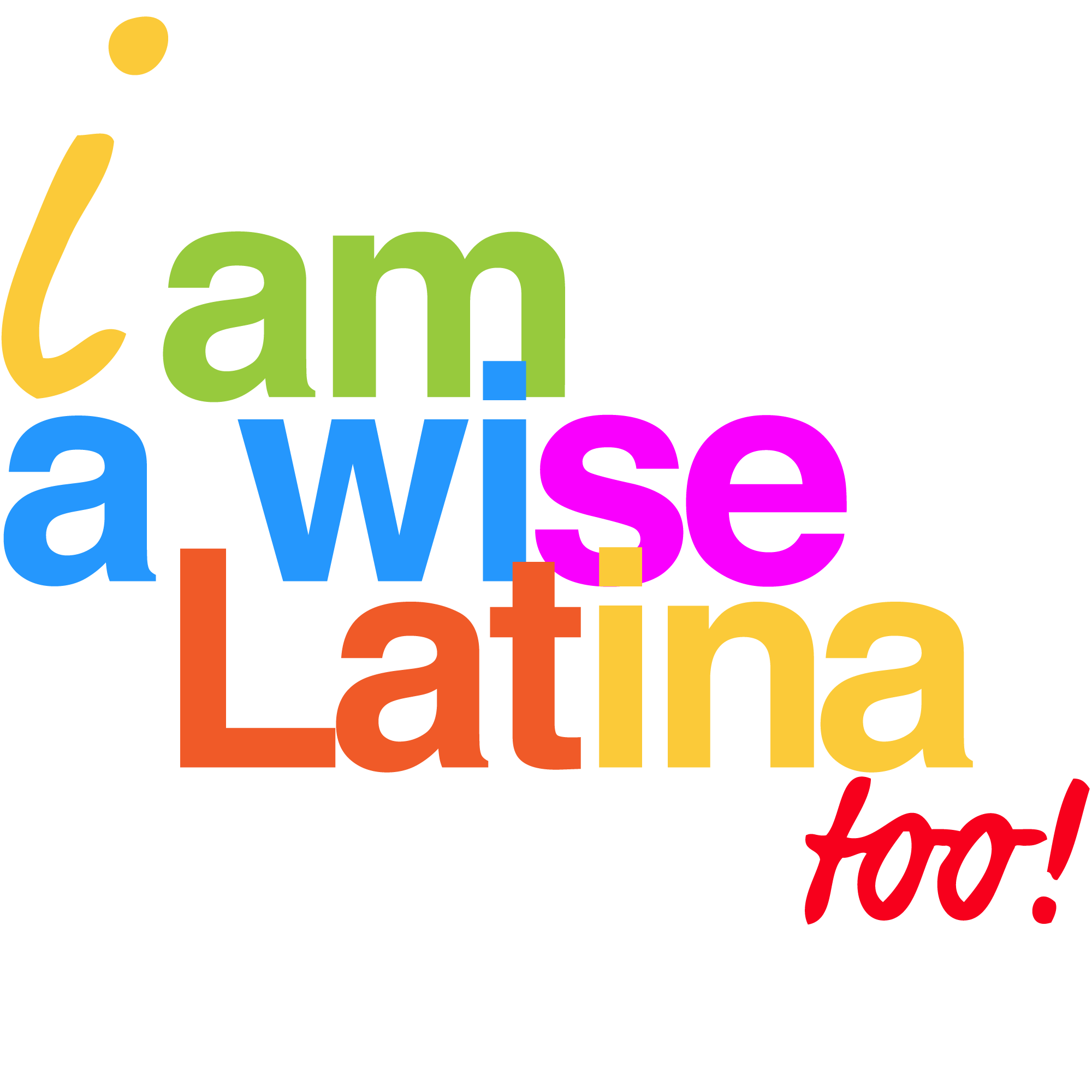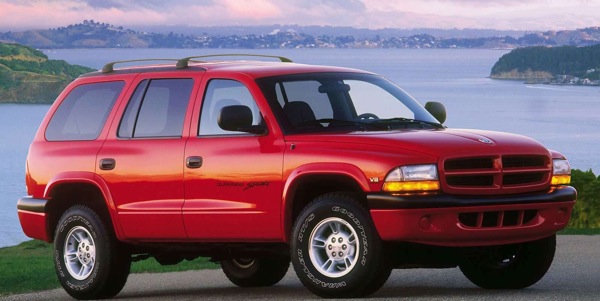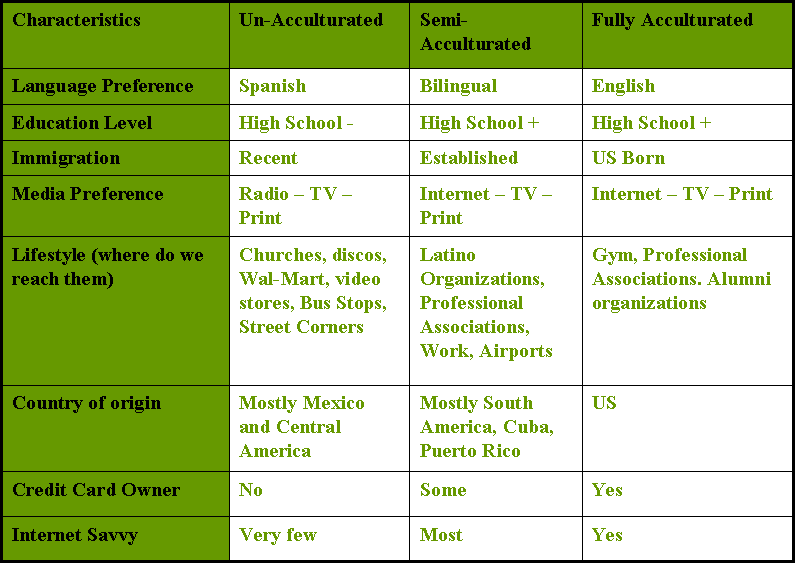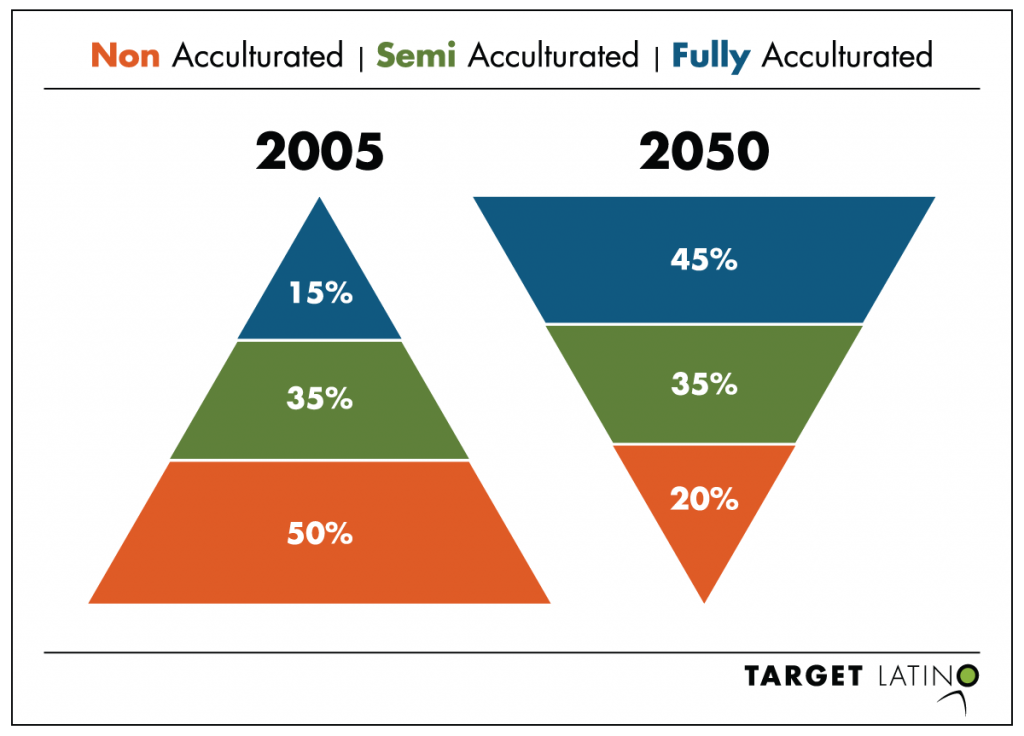Emerging U.S. Hispanic Market Brimming with Opportunity
The rapid expansion of Hispanics into American suburbs presents sizable opportunities for marketers who understand the rich cultural diversity and purchasing attitudes of this segment, according to the latest Consumer Dynamics study from Acxiom® Corporation.
The study, titled “Getting Into the Market Share Race With the Emerging Hispburbanite Market,” taps into the explosive growth centered in 10 markets.
Emerging U.S. Hispanic Market:
- Charlotte, NC
- Nashville-Davidson, TN
- Raleigh, NC
- Memphis, TN
- Greensboro, NC
- Little Rock, AR
- Indianapolis, IN
- Birmingham, AL
- Minneapolis, MN
- Aurora, CO
The study reveals:
- Hispanic suburban expansion is projected to continue.
- The Hispanic market encompasses four distinct Hispburbanite groups.
- Marketers have above average growth opportunities in areas with high concentrations of Hispanics.
- Marketers should segment this culturally diverse group for maximum marketing impact.
The study shows Hispburbanites differ from Hispanics living in the main port-of-entry cities of New York, Los Angeles and Miami as they tend to be younger, more acculturated, single and wealthier. They tend to fall into four distinct groups:
- Upstarts and Upbringing – Made up of some of the younger Hispanic households, this is the most acculturated of all groups. They primarily speak English away from home and are a mix of singles and recently married couples, some with young children.
- Trendy Traditions – A somewhat younger mix, this group is mostly single and childless. Though slightly less acculturated than Upstarts and Upbringing, this group prefers American name brands and brand-name bargains.
- Recent Arrivals –The least acculturated of all groups, these households more frequently comprise immigrants who have resided less than 10 years in the United States. They prefer to speak Spanish at home and away, and are primarily single renters with low to middle incomes.
- White Picket Fences – A married and single mix of adults with above-average income makes up this group. Often owning their own homes, these households are more comfortable with financial institutions than other groups and are building net worth. This group is primarily English speaking and while they do save, their incomes allow for plentiful shopping, especially for jewelry and business clothing.
Overall, Hispburbanites tend to be mostly second- and third-generation Hispanics with increasing consumer buying power. “This market represents tremendous opportunity for companies across industries,” said the Acxiom’s senior manager for analytic, geospatial and segmentation products. “Segmentation allows marketers to target initiatives that encompass cultural preferences based on the characteristics of the defined consumer groups.
“Intelligent marketing decisions will maximize results, greatly improving return on marketing dollars spent,” he added. “At a time when marketers are under intense scrutiny to produce measurable results, this study provides invaluable consumer insights.”
Source: Acxiom













